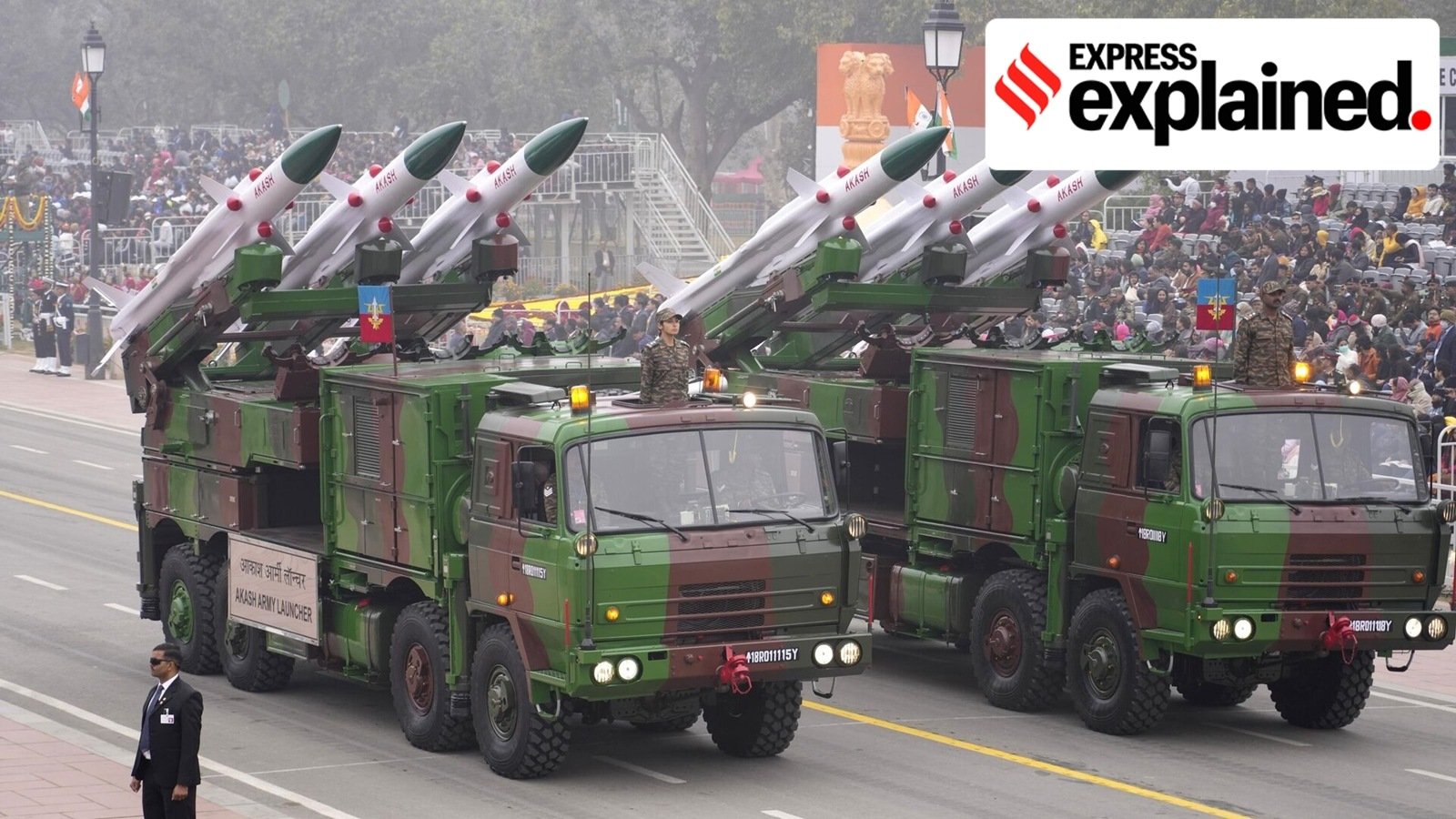
Besides achieving its immediate military objectives, Operation Sindoor gave a convincing demonstration of the superiority of India’s defence capabilities over Pakistan.
While the spectacular success of India’s multi-layered air defence system, which neutralised almost every incoming missile and drone, has been the most-talked about, an array of other systems and technologies, many of them home-grown, have performed admirably to provide a decisive edge to the Indian military.
Thus far, India has not disclosed the details of the platforms, weapons, sensors, and radars used during Op Sindoor. The Indian Express spoke to a few serving and retired officials and scientists to identify some technological elements that stood out during the four-day operation.
These experts, most of whom spoke on the condition of anonymity, attributed the success of Op Sindoor to years of investment and research in space technologies, aeronautics, avionics, missile development, and weaponry.
Guidance and navigation
A remarkable feature of Op Sindoor was the precision with which India hit its targets, many of which lay deep inside Pakistan. Not only was this crucial to achieve the military objective of destroying terrorist bases, it also established to the world that India was behaving responsibly, with every effort made to minimise collateral damage.
In the early hours of May 7, when India struck nine terrorist training camps inside Pakistan and Pakistan-occupied Kashmir, the missiles hit their targets with pin-point accuracy: specific buildings within a compound were struck, without harming nearby structures. Similar precision was achieved on the night of May 10, when India hit at least eight important air bases inside Pakistan.
What made such precision possible was the use of extremely sophisticated navigation and guidance systems, involving both ground and space assets.
Story continues below this ad
“The impeccable guidance and navigation technologies were one of the key highlights (of Op Sindoor) The level of precision that was achieved is the best that anyone elsewhere can get,” said a retired director of a Defence Research and Development Organisation (DRDO) facility who has worked extensively on missile technologies.
He added: “This kind of capability is the result of years of indigenous research in the DRDO, ISRO (Indian Space Research Organisation), and other institutions. We have had our share of failures and setbacks during this time”.
For instance, the Brahmos supersonic cruise missiles that were likely used, “have state of the art guidance systems that have been developed over the years,” the retired official said.
India’s indigenous navigation and guidance system depends on the NavIC (Navigation with Indian Constellation) system of satellites, which is complemented by an array of very high-resolution earth observation satellites.
Story continues below this ad
The Cartosat, RISAT, and EOS series of satellites keep a round-the-clock watch on the subcontinent, and provide vital information and imagery that are useful to the military. Some of these satellites can identify or differentiate between objects as small as 25 to 30 cm in size. NavIC is said to achieve positional accuracy of 10 to 20 cm.
As a result, these assets make it possible for Indian weapons to achieve a sub-metre targeting precision, which was seemingly achieved during Op Sindoor. And Indian scientists are constantly working to further improve these capabilities. “Guidance and navigation” was one of the 75 technology priority areas identified after DRDO’s Anusandhan Chintan Shivir (research deliberation conclave) in June 2023.
Lethality and destructive power
The complete destruction of the targeted terrorist hideouts, and the large craters visible in satellite images of struck Pakistani air bases, have been instrumental in convincing the world about the immense damage India perpetrated on Pakistan. Not only were Indian weapons precise, they were also very lethal.
“The lethality and reliability of weapons systems used points to the excellent performance of propulsion systems, warheads, and fuses,” said another former director of a DRDO laboratory. He added: “Thanks to the Integrated Guided Missile Development Programme spearheaded by Dr A P J Abdul Kalam, the propulsion and warhead technologies have become a strength of the DRDO.”
Story continues below this ad
Scientists continue to grow India’s capabilities in this field as well.
“The futuristic research on these fronts continues with work on deep penetration warheads, green explosives, and other technologies. Then there are the indigenously developed Directed Energy Weapons, or DEWs, which use highly-focused energy beams, like laser, to damage, disable or destroy targets. I am not sure but it is very likely that these technologies were used in the operations against the incoming drones,” he said.
In March 2022, the Defence Ministry had identified DEW as one of the 18 crucial sectors for industry-led development. DRDO had also displayed the laser-based DEW in the Republic Day Parade this year.
Radars and air defence
The Russian S-400 system has come in for a lot of praise in recent days. Prime Minister Narendra Modi himself acknowledged its importance by posing next to an
Story continues below this ad
S-400 launcher during his visit to the Adampur Air Force Station on Tuesday.
That said, India’s air defence comprises an array of different radar and weapons systems which work in tandem, and were successful in neutralising almost every Pakistani attack. The radars used included indigenously-developed Rajendra radars, Rohini 3D medium-range surveillance radars, 3D low-level lightweight radars, and low-level transportable radars (LLTR).
“The indigenous radars played a crucial role on the battlefield, and for all services. The entire air defence system, tracking of adversary drones, tracking the movement of enemy airborne assets was only possible because of these state of the art technologies,” said a DRDO scientist who is a serving head of a defence laboratory.
“There is a lot of ongoing research on radar technology at the DRDO including AI tools for radars, reconfigurable intelligent surfaces for cognitive technologies, better signal processing tools, foliage penetration radars, and stealth detection radars,” he said.
Story continues below this ad
Indian air defence system included newly-inducted SAMAR (Surface to Air Missile for Assured Retaliation) systems that can intercept a range of low-flying aerial targets up to a range of 12 km, and the Akash short-to-medium range surface-to-air missile systems.
Moreover, the original Bofors anti-aircraft guns, which are currently being upgraded, are learnt to have been used to shoot down incoming drones in Jammu and Kashmir. The indigenous upgradation of these guns includes the addition of radar, electro-optical sensors, and auto-tracking systems. These upgraded guns have also been deployed close to the LAC.
Unmanned vehicles
This was the first India-Pakistan conflict in which drones and other unmanned systems played such an important role.
While Indian drones penetrated deep into Pakistani airspace, inflicting damage on strategic targets in cities like Lahore, Pakistani drone swarms were far less effective.
Story continues below this ad
Abhay Pashilkar, director of the Bengaluru-based National Aerospace Laboratories (NAL), a CSIR facility, said the future of warfare will increasingly be fought using unmanned systems on the frontline backed by human-operated systems. India thus needs to acquire and master a new set of technologies in which different combinations of manned and unmanned systems would work as a team, he said.
“In the last few years, we have developed good capabilities in drone technologies for a variety of functions. We have to work with different users, the industry and academia to build up manufacturing capacities that can produce these machines in the required time frames. We also need to secure supply chains for raw materials, because a lot of these are still being imported,” he said.





